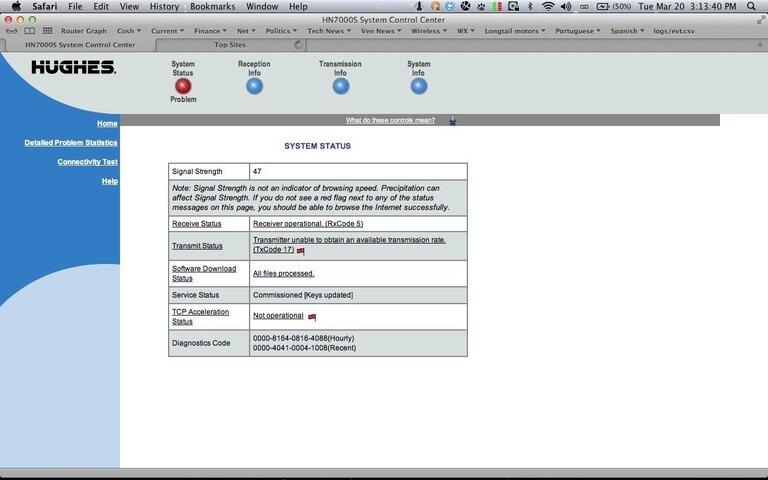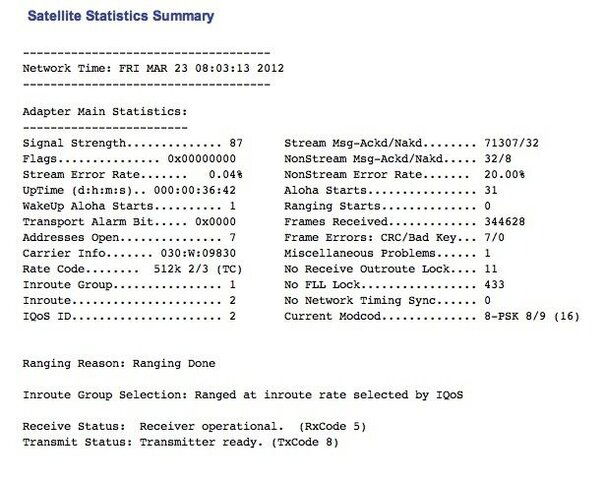Guys, The day before yesterday we had a strange new event. We had a big storm pass through and the signal faded out as it always does, and when the storm passed our RX went back up to acceptable levels but connectivity didn't return. We had a TX error number 17 (TX unable to obtain an available transmission rate), and resetting/restarting the modem didn't fix it. I manually forced ranging and that immediately got us going again. Yesterday we had a TX error, unfortunately I didn't grab a screen shot and I don't remember the error. I think the number might have been 10. Forcing the ranging got it going again.
On thing to keep in mind about this system is the antenna was installed more than a year ago, and it was realigned to a different satellite at least 8 months ago, and it worked pretty good up until recently. There was a point where with this setup on this satellite with the antenna pointed just as it is we got super performance. Skype worked great for video calls in both directions. Here's a timeline of what's been going on:
1) For many months, probably at least 6, I've noticed the RX signal fade to the point of losing connectivity on blue sky days with no wind (possible antenna movement) and no obstruction of the antenna. The base is very rigid and the antenna mount is very stout. There is no movement of the antenna that would cause this. But the signal would come back up on it's own and required no intervention on my part. Resetting the modem or forcing ranging didn't speed the recovery. The outage would last between 1-3 minutes. Most users didn't notice unless Skype was running and they'd see they're going on and off line, and the online gamers noticed it.
2) performance has dropped in recent months, but I don't know what our contention ratio is and our provider won't tell us. I can't be sure the degredation in performance is due to our equipment here.
3) It's only in the past few days that we've been having errors and loss of connectivity which requires intervention.

On thing to keep in mind about this system is the antenna was installed more than a year ago, and it was realigned to a different satellite at least 8 months ago, and it worked pretty good up until recently. There was a point where with this setup on this satellite with the antenna pointed just as it is we got super performance. Skype worked great for video calls in both directions. Here's a timeline of what's been going on:
1) For many months, probably at least 6, I've noticed the RX signal fade to the point of losing connectivity on blue sky days with no wind (possible antenna movement) and no obstruction of the antenna. The base is very rigid and the antenna mount is very stout. There is no movement of the antenna that would cause this. But the signal would come back up on it's own and required no intervention on my part. Resetting the modem or forcing ranging didn't speed the recovery. The outage would last between 1-3 minutes. Most users didn't notice unless Skype was running and they'd see they're going on and off line, and the online gamers noticed it.
2) performance has dropped in recent months, but I don't know what our contention ratio is and our provider won't tell us. I can't be sure the degredation in performance is due to our equipment here.
3) It's only in the past few days that we've been having errors and loss of connectivity which requires intervention.



